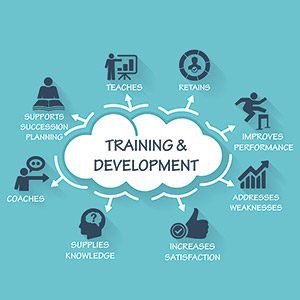Table of Contents
Last updated on March 29th, 2024 at 10:37 am
6 technologies to modernize your Learning and Development Programs
The recent rise in demand for online methods in work, education, and business has led to radical changes in technology to facilitate these transitions. Organizations are now using new and innovative methods and technologies to work remotely without affecting employee productivity or business continuity.
Modernization
 Most learners today are of the ‘Y or Z’ generation – those who have grown up with the Internet, have access to school, and are early adopters of new technologies. They expect to learn through high-tech platforms.
Most learners today are of the ‘Y or Z’ generation – those who have grown up with the Internet, have access to school, and are early adopters of new technologies. They expect to learn through high-tech platforms.
Technology has rapidly changed the type of skills that are critical to employee and company success and the success of today’s Learning and Development (L&D) programs.
Gradually, L&D professionals are taking advantage of their cross-functional skills, from designing, launching, and managing their programs, from data analysis to digital marketing.
Here are six technologies to make the education and development industry our institution to meet the challenges of modernization.
[1] Video-rich courses
Video content is a more efficient and convenient option in online training programs. Videos transmit a lot of information in a very short period of time. This trend marks a sudden increase in the online streaming space through the new millennium. New training technologies, tools, increased network bandwidth, and wider access to the Internet have enabled organizations to create key-shaped and attractive learning modules. Advanced video-based training programs can also be used in traditional and mixed settings. Learners who are accustomed to video conferencing training tools expect video-based content.
[2] Mobile learning
The widespread adoption of mobile phones and smart devices is encouraging organizations to take advantage of mobile learning technology to train their employees. Mobile learning has become the most traditional means of reaching out to extended employees, who are more technology-savvy and digitally connected. Mobile learning enables students to take small-scale courses without being limited to a specific time and place, leading to higher absorption and retention rates of knowledge.
[3] Automation and adaptive learning
The analytics features provided in the Learning Management System (LMS) make it easy to automatically identify learners’ preferences and needs and customize their e-learning experience accordingly. Algorithmic solutions evaluate the user’s knowledge and automate the objectives of the skills learning process. LMS vendors and content developers are adopting a large number of automated measures to create new curricula and teaching materials, reducing the cost and development time involved in the traditional process.
[4] Virtual environment
The virtual environment and the use of virtual training coaches, called avatars, influence the mood of the traditional classroom online social interaction in training. Virtual Media is an interesting platform for young students, where they can create their own avatars in the form of cartoons, create their own goals, and collaborate with other learners.
[5] Big Data.
More and more educational activities are taking place digitally. Data facilitates the management, tracking, and reporting of training activities. LMS is integrated with big data analytics tools, institutions can capture student usage patterns, skills, behaviors, learning outcomes, curriculum effectiveness, and many other features and help create personalized training courses based on facts and data insights.
[6] HTML 5 based design
HTML5, the latest version of HTML, is compatible with all browsers, platforms, and devices, including thousands of years of use of mobile and smart gadgets. This web technology makes it easy to adapt to a variety of device features and is quick to implement interactive and engaging learning content. The capabilities of offline storage and data management add new dimensions to the various ports and courses that respond to student expectations.
Summing up
Millennials are expected to grow by more than 75% of the workforce by 2025, which requires the modernization of L&D programs. To modernize your corporate training through streamlined methods and technology, accept more of the above six-pointers than the traditional pattern of curriculum development.

